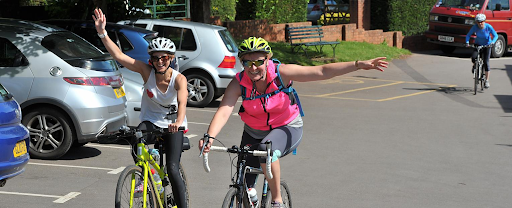
Training to ride a bicycle can be complex. It is different from other sports, such as running, where you only need your legs, a watch, and shoes. The complexity of this sport intimidates most beginners; however, experienced cyclists can guide you and save you from embarrassment, time, and money. It would be humbling to ride along with these gurus who know the intricate of the road. Though most of the things you will hear are based on the rules, experienced cyclists have gained their reputation through hard work and intuition, and by engaging them in a conversation, you will unearth essential tips to get you through your first few years. This article presents 25 best tips from experienced cyclists to keep on the truck to successful cycling.
1. Wear Padded Cycling Shorts
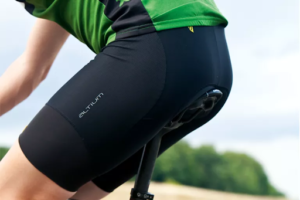
Several cycling attires have been designed to ensure you look good and are comfortable. The best attire is padded cyclists shorts which come in different fabrics and colors. These shorts protect your back from hurting as you ride on. With a decent saddle fitted on your bike, you can comfortably ride wearing padded shorts.
2. Wear a Cycling Helmet
The helmet doesn’t have to be fancy as long as it is affordable, light, comfy, and meets the same safety standards. Ramming the road with your bare head in case of an accident can cause serious head injuries, hence the need for a helmet. You can also install airbags for your bike’s safety. If you get one with additional light, it will protect you when joining the road from the sides because they can see the light on top of your head.
3. Wear Cycling Sunglasses
As you cycle, weather conditions may differ, but sunglasses will protect your eyes from the rain, sun, stones, and even bugs minimizing distractions as you ride on. Some sunglasses have interchangeable lenses, with dull ones worn on wet days and bright ones on sunny days.
4. Check your Tyre Pressure
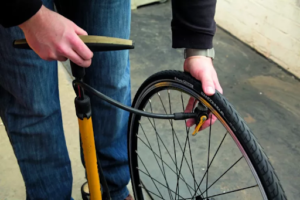
The sidewall of the tyres helps one know the recommended levels of your tyre pressure. Keeping a track pump handy is a good investment since it contains a pressure gauge, and it requires less effort to get the tyre to the recommended pressure.
5. Clean your Bike Regularly
You do not need expensive cleaning equipment to clean your bike. You can scrub your bike with hot soapy water and a sponge, and it will shine as new. Some stains may require a deep clean, in which case, you could utilize some cleaning sprays in the market. Additionally, you can use a specialist degreaser to clean the chain, cassette, and crankset. After the clean, you can spray the bike with silicone aerosol to keep mud from sticking on the bike’s surface on the next ride. Regular cleaning will also help you stop creaks, thus making your gears durable.
6. Regularly clean and oil the chain
Your bike’s chain needs extra attention, especially if you are ridding during lousy weather. You can use Dawn liquid dish cleaning soap to have a clean wash of your greasy chains. A clean chain will help your bike to run quietly, perform better, and last longer. It will also eliminate the dreaded creaks hated by many cyclists. Furthermore, you will keep in good condition some of the expensive parts like chainrings.
7. Learn to Fix a Puncture
Though you can have your bike puncture mended at a bike shop, you can learn this trick at home before it happens to you away from the shop. Fixing a puncture can be troubling for inexperienced cyclists, limiting them from taking many routes or even putting some riders off. However, with a bit of practice and you will learn how to fix your inner tube quickly. The only challenging part is getting the tye off and on the rim, but practicing before the puncture can help you have the needed experience.
8. Fit the defenders and mudguards in the wet conditions
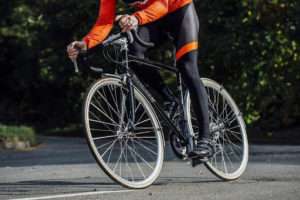
During the rainy season, cycling can be fun and messy at the same time. Some cycling clubs mandate that cyclists fit mudguards on their bikes to avoid soaking fellow ridders in wet conditions. Fitting a mudguard will save your back and your washing machine from the task of removing the mud spay on your jersey. Furthermore, mudguards help you stay dry and improve your performance as you focus on training with added comfort. The mudguard will also enhance the bike’s longevity when riding in the rain as it reduces the amount of dirt getting into the bearing and moving parts.
What to take when cycling
It is a common rule for regular cyclists to carry a little energizer to avoid the dreaded bonk. The internet is flooded with complex nutrition for cyclists; however, you do not have to follow through with such complexity. Take a dig at your home and use anything portable that can carry your drink and ride with it.
9. Stay hydrated
Every time you are heading out for a ride, ensure you have a hydration pack or a water bottle to keep you hydrated. The bottle will help you refill along the way if you run out of water. Most coffee shops will do a free refill for you; otherwise, you will feel exhausted faster as you sweat and lose energy during your journey.
10. Have some calorie provision
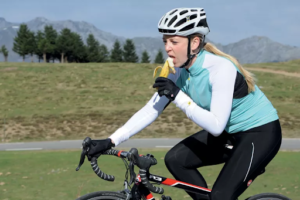
This will help you avoid the dreaded ‘bonk’- your body running out of fuel and coming to a painful halt. Your body can only carry glycogen worth 90 mins of intense cycling before it needs urgent replenishing, lest it turns to fat burning for fuel. However, power from fat burning will not provide the energy required for the same level of intensity. This means that you need to consume between 100 to 250calories every 30 mins. You could carry a banana, cereal bar, or energy gel to give the necessary calories.
11. Use formulated sports drink
Most beginners experience cramping because they are ridding harder and for more extended periods than the body is used to. Therefore, you must replace the lost electrolyte on sweat by drinking formulated sports drinks. Fortunately, you can make yours by adding water, salt, and sugar to your fruit juice. This drink will ease any cramps you may experience as a beginner.
12. Use recovery drinks
After a long, hard ride, your muscles are probably sore, and a recovery drink coupled with some rest will do the trick in bringing your body to normalcy. You want to include more protein in the recovery drink to help with the healing of muscles. Most of these drinks you can buy at the market or have some fun making yours. You could blend a combination of milk, banana, some honey, and one tablespoon of peanut butter. You will love this smoothie and the energy it will produce.
13. Visit a coffee shop along your ride
In the middle of your ride, you can stop at a coffee shop to reenergize. Research has found that caffeine can enhance a cyclist’s endurance on the bike, meaning that this stop at the coffee shop is worth it.
Safety Tips for New Cyclists.
Safety is the utmost for all cyclists. You will have to learn the secondary and primary riding techniques and positions. Having the right mix of caution and confidence will enable you to rule the rural roads and city streets. As you gain experience riding with gurus, you will learn how to correctly and quickly assess a situation.
14. Learn and obey traffic rules
This knowledge is essential for city riders. Without knowing the rules, you may lose your confidence on the road and hamper your decision-making in the middle of traffic. Be assertive, stay away from the sewer line, and remember that you too have a right to use the road like anybody else.
15. Be visible
At all times, you want to use the bike’s lighting and reflective clothing for enhanced visibility. If you are ridding during winter or low-light fall, keep your lights on even during the daytime. Other motorists or bikers need to see you to avoid unnecessary accidents. Bright clothes and proper lighting will help other road users recognize your presence and allow you space.
16. Learn to use your brakes effectively
The front brakes are more efficient when you want to stop than the rare ones. Therefore, it is recommended you achieve a 30/70 or a 40/60 power distribution between the rear and the front brakes. However, since modern brakes are often powerful, you want to take care not to lock up; otherwise, you could go over the handlebars and topple on the road.
17. Learn riding in a group
When riding with a group, learn to keep a level head as you ride close to fellow cyclists. Avoid sudden movements or brakes that could cause unnecessary accidents. Learn to use your hand signals and if you see any obstacle on the road, warn fellow cyclists, and they will reciprocate the same.
18. Cycling Techniques
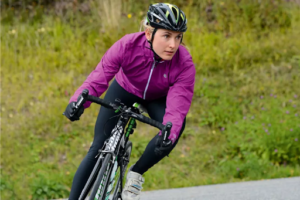
Though many beginners focus on pedaling techniques to improve their efficiency, other methods, such as positioning and shifting at the right time, are also as important. Whether your objective is to gain free speed or keep pace with that fast-training partner, these techniques will help you be efficient.
19. Adjust your saddle for comfortability
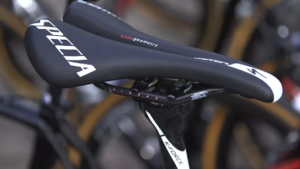
To achieve better pedaling efficiency and comfort, you will need to set your saddle at the right height and angle. Your saddle’s nose should either be pointed upward or flat so that you do not slide forward. A correct saddle setting also helps take the weight off sensitive areas, including hands, shoulder, and neck.
20. Relax the upper body
Some beginners keep a tight grip on the bike while tightening the upper body to prevent falling. However, this is not advisable since this creates tension, leading to aches and pains. Learn to stay on the bike as you relax your hands and shoulders. A soft grip on the bike will give you more control and improve your speed. You will not perform over-corrections while taking sharp corners or dodging obstacles.
21. Shift to a lighter gear before you need it
Knowing the time to change gears while cycling is an art that takes time to master. Most beginners wait for a long time before shifting to easier gear when they are about to climb. If you shift the gears when you are climbing, the chain will come under load. The chain would begin to grind, pop off, or refuse to shift. An early gear shift will help solve this problem so that you can keep the momentum.
22. To go long, go slow
If you want to go long distances and faster, you will need to go at slower speeds. This will improve your endurance and take off stress from your tendons and muscles. Training slower builds your resilience and enables your lungs to build strength for races.
23. Experiment with different cadences
An average cycling cadence falls under 80-100 revolutions per minute. Your riding cadence should be what seems natural for you and also what is efficient. Experimenting with different cadences will help improve your climb and long ride speeds. Changing the rhythm can be fun and help you build a higher power output and performance.
24. Ride with the pack
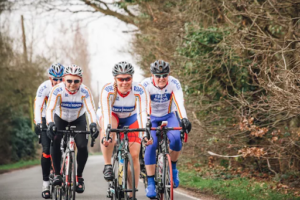
If you want to take your cycling to a whole new level, join other cyclists whenever possible. Cycle behind them as this would improve your energy by 30-40% than going it solo. Sitting behind fellow cyclists as a beginner will enable you to ride for longer distances and faster.
Cycling is fun and can provide several health benefits and keep you fit. Many countries like Singapore promote riding to work as this will reduce the carbon footprint within the Island. Here at Shariot, we encourage cycling as means of keeping fit and promoting environmental health. We are with you all step of the way as you train to become a cycling pro.





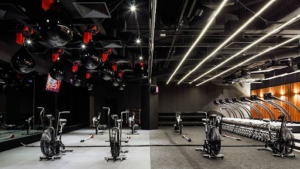
No comment yet, add your voice below!